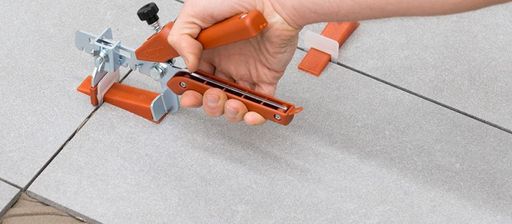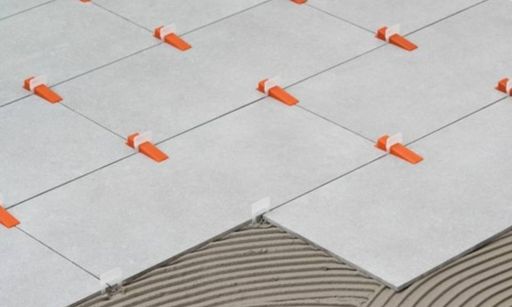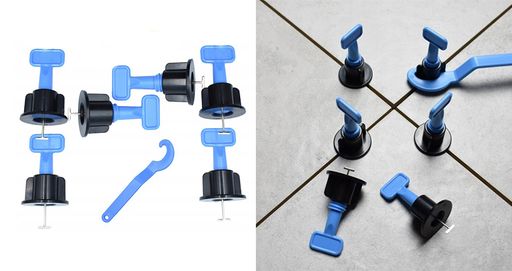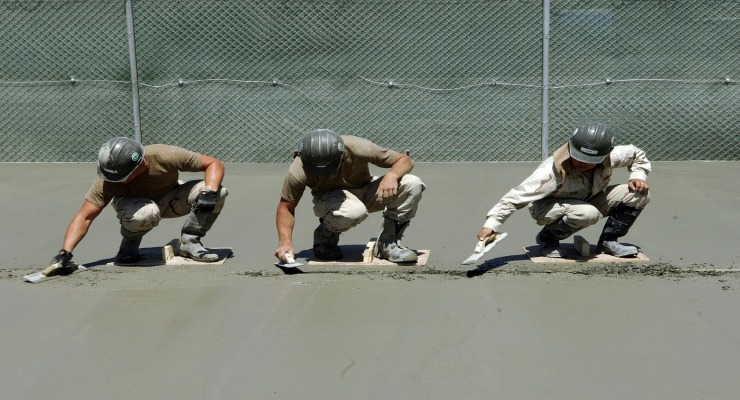Which Tile Leveling System Is the Best? TOP 3 Products
Are you planning to lay tiles in the kitchen? Do you want to tile the bathroom? It doesn’t matter where you are going to lay tiles - you should prepare yourself for a lot of work which requires much attention and high precision. Using traditional cross spacers is tedious and time consuming. It might also be quite problematic if you don’t have much experience. But, it doesn’t necessarily mean you have to give up the idea of DIY tile installation. Just use the right tile leveling system.

What is a tile leveling system?
A tile leveling system is a set of elements thanks to whose it is much easier to fit and grout the tiles. It contains clips and wedges made from plastic material. They can be used to level the tiles on the floor or the wall. They should be placed between adjacent tiles.
Using a modern tile leveling system is a perfect solution both for professionals and for unexperienced users. Thanks to this method the whole process is much easier and more importantly, quicker. It’s estimated that a tile leveling system can save up to 50% of time compared to laying tiles using traditional spacers.

How does a tile leveling system work?
A standard tile leveling system contains specially shaped clips and wedges that have characteristic bumps on the surface. It’s important that one uses both of those elements to achieve the expected results.
The equipment should be used when setting the tiles on the surface. Before doing that, one needs putting a clip between two adjacent tiles. Then, a wedge should be stuck in the clip. It presses the tile to the floor or the wall, which results in leveling the surface.
The bumps or carvings on the wedges are very important. They prevent the element from moving and stabilize the tiles. It’s definitely much more efficient solution than placing cross spacers which don’t hold the tiles at all. What’s more, a tile leveling system is far easier to use. There is no need to use any additional equipment like a level - which might make the process much longer and more complicated.
Where can you use a tile leveling system?
Although many believe that a tile leveling system can be used only for floors, in reality it is a highly universal solution. It means you can use it for tiling walls, or even stairs as well.
Note that it doesn’t matter what kind of tiles you use. They can be made of:
- ceramic,
- grés,
- granite,
- stone.

Is a tile leveling system worth it? Advantages of the solution
A tile leveling system is a universal solution - you can use it for various types of surfaces. It can be used both inside, as well as on the areas located outside the building.
Using this type of equipment, you can lay tiles of any type - regardless of the size and thickness. In any case, you can get a perfectly even surface.
Leveled tiles are only one of the advantages. Additionally, you also get a possibility to get perfectly even grouting across the whole surface. Evenly set tiles means exactly the same width between each of them. Thanks to this, the grouting looks exceptionally elegant.
TOP 3 - the most popular tile leveling systems
Most users associate a tile leveling system with a set of clips and wedges. It is, of course, correct. However, one can find various sets that slightly differ in terms of their usage - which results from the elements’ different construction. There are also systems that have a completely different structure.
We present TOP 3 products which are most popular among specialists and rated as the best.
A tile leveling system with anchor-shaped clips
It’s the most popular tile leveling system - both among experts and do-it-yourselfers who want to lay the tiles themselves. The clips have a special design - they resemble an anchor or an inverted “T.”
The slightly raised endings on the both sides of a clip are placed under the tiles. Then, a wedge is put on the clip. In this type of set, the wedge is open at one side. It surrounds the clip’s stem. After putting a pressure, it gets blocked by the bumps on its surface.
It’s common such a set also contains special pliers. Thanks to them, setting the system and its elements is much quicker and it doesn’t require putting any force to it.

A tile leveling system with standard clips and wedges
One of the most commonly used option is a tile leveling system which uses classic clips and wedges. In this case, a clip resembles a window with a base at the bottom. The window is simply the space for a wedge. It’s different than the previous system - the wedge should be slid in the middle of the clip. Thanks to the characteristic bumps one can put a maximum pressure on the wedge and as a result level the tiles perfectly.

A reusable tile leveling system
Manufacturers also offer a reusable tile leveling system, which uses twisted elements. They are quite different the classic ones. The differences lie both is the construction and the usage.
This type of a tile leveling system uses two elements as well. The main part is a clip with a large thread and a metal element shaped like a “T”. The other element is a cap, which secures a tile.
It’s not an entirely flawless solution. In this case you have to use additional tile cross spacers, which takes more time and might be difficult for unexperienced users. Furthermore, after leveling the tiles, the clips have to be removed after a few hours. It might ruin the tiles level.

A tile leveling system - single-use or reusable?
A tile leveling system which uses clips and wedges might be partially reused. The clips are single-use elements. You can, however, reuse the wedges. It’s a common solution among experts, who can save a lot by buying only the missing clips.
It’s important to control the condition of the wedges. After several uses they might get worn - it can be judged by the state of the bumps that hold the wedge in a clip. If you noticed such an occurrence - you might decide to buy new wedges.
A great advantage of a reusable tile leveling system is definitely the fact that it can be used many times, which can save some money. Nevertheless, many users claim that using it is far less convenient. The necessity to use cross spacers is a great disadvantage. It not only makes the work longer for experts, but for unexperienced users it also might be quite problematic.
How to choose a tile leveling system?
Quality is definitely the most important aspect when choosing a tile leveling system. Material of the elements is quite significant. A durable, damage-resistant material used for production guarantees the stability of the tiles, hence it’s a crucial matter.
There is also another aspect of great significance for systems with clips and wedges - whether the manufacturer offers a possibility to buy each of those elements later, separately. It’s crucial especially for professionals who use the same wedges many times.
The price of a set is, of course also very important. Calculate how many elements you can buy for a given price and check whether the manufacturer offers sets with additional equipment like pliers for pressing wedges to tiles. It’s a good way to catch great offers that are worth investing.
FAQ
How many tile leveling clips do I need?
For 40x40 tiles you need around 20 pairs of clips+wedges per one square metre. For other sizes, those numbers differ. For 50x50 tiles you need 24 pairs per 1 sq. metre, for 80x80 - 10 pairs per 1 sq. metre, and for tiles 100x50 - 16 pairs per 1 sq. metre. Typically, you can find the information on the manufacturer's website or on the product's packaging.
Which tile leveling system is the best?
The best tile leveling system is the one that fits particular needs like type of the tiles or their thickness. Some users prefer single-use systems, others choose reusable sets which are long-term investments. It's important that the tile leveling system matches one's personal needs and skills.


